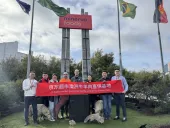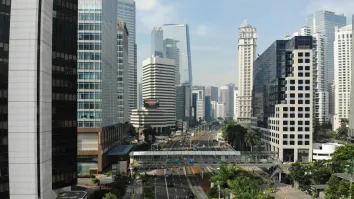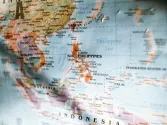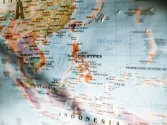
What makes a resilient and adaptable supply chain in Asia Pacific?
Companies are likely to diversify their sourcing options in the long term.
As companies emerge from the pandemic-led crisis, there is expected to be scrutiny and assessments across all areas of the business, with a focus on planning and preparation for the next potentially massive event. According to a report from Tata Consultancy Services, the lessons from strategies that were deployed, customers gained or lost, and the evaluation of supplier alliance strength, inventory position, diversity of sourcing and supply chain length will define the capabilities needed for a resilient and adaptable supply chain post-pandemic.
In Asia-Pacific in particular, COVID-19 has led to the shutdown of factories, production lines and supply chains, and with the region viewed as the sourcing epicenter of goods including ingredients, components, medical and medicinal products, and finished goods, its impact was felt across the globe, said TCS’ consulting partner for North American retail & CPG practice Jeffrey Paul Puddington.
Data from Dun & Bradsteet revealed that services, wholesale, manufacturing and retail accounts for more than 75% of businesses in China. “The domino effect of plant closures and supply shortages across the extended supply networks resulted in the supply chain disruptions that most companies experienced,” TCS’ retail and supply chain consultant Mona Khan added.
Retail Asia spoke with Puddington and Khan on the ongoing and upcoming trends in the region’s retail and supply chain, and on the capabilities that its participants will need to possess in order to tide over and even thrive amidst and beyond the ongoing disruptions.
In what ways has COVID-19 affected supply chain participants across Asia Pacific?
Puddington: Asia Pacific is the sourcing epicenter of goods (ingredients, components, medical and medicinal products, as well as finished goods). And because of that, I think the impact is twofold in terms of time dimension.
In the early stages, COVID-19 was contained in the region, forcing the shutdown of factories, production lines and supply chains within Asia Pacific. This delayed the production and shipment of the aforementioned goods, which in turn, impacted the timing and availability of those goods across the globe.
This coupled with the change in demand patterns, some of which have been extreme, has changed the previous steady state and will lead to lingering shortages and excesses of inventory.
Longer term, COVID-19 has forced both manufacturers and retailers to examine their supply chains from a sourcing diversity perspective.
Khan: The domino effect of plant closures and supply shortages across the extended supply networks resulted in the supply chain disruptions that most companies experienced. According to Dun & Bradstreet services, wholesale, manufacturing and retail accounts for more than 75% of businesses in the impacted region of China.
On a global level, 51,000 companies have one or more direct or Tier 1 suppliers, from the impacted region and an additional five million companies have Tier 2 suppliers there, with 938 of those being Fortune 1000 companies. This was a major reason why we saw companies grappling with the imbalance of supply and demand. Geographic sourcing diversity will be looked at by both suppliers and manufacturers.
We also saw the shift in consumer behaviour and change in demand patterns- for e.g. demand for less perishable and longer shelf life foods increased. Consumer panic buying and short-term spikes in demand resulted in a bullwhip effect and “eggs” was a classic example. In Singapore, eggs were overwhelmingly in demand during March and April, missing from the store shelves and online.
Distributors stocked up in response, however in June 2020 distributors had to throw away more than 250,000 eggs due to oversupply. Bullwhip effect is a result of a long and complex supply chain where small shifts at a node can have a multiplier effect across the value chain.
Which of these impacts are likely to last permanently and why?
Puddington: Geographic sourcing diversity will likely be more permanent to increase supply capability and supply chain resiliency. Prior to the pandemic, there were significant efforts to control costs and consolidate suppliers which was made possible by the enabling capabilities available in Asia Pacific.
Khan: Companies are going to assess the risk of their supply chains and supplier networks to seek the alternate sourcing options to build resiliency and ensure availability during crisis and meet customer demands.
Also given the consumer shift to online and retailers scaling up to provide for their needs requires a strong collaboration with suppliers to support these new fulfilment methods. So, I believe diversifying the sourcing options geographically and close collaboration with suppliers are going to be key going forward.
What capabilities in particular would be the most urgently needed for participants in the region? What strategies would you recommend to gain these capabilities?
Puddington: Integrated Visibility, Supply Chain Source Mapping and Constrained Supply Order Management. Each of these capabilities are inherently different. Visibility requires information from and output to many different systems and partners. Supply Chain Source Mapping is usually a collaborative effort with Suppliers to understand where each component of a consumer good originates and what other equal alternatives are available.
The unfortunate near-term reality is that in most instances demand will exceed supply. The strategy of who to supply and how to allocate that limited supply will be necessary.
Khan: To add to that, prior to the pandemic the focus was on saving costs and lean supply chains. Now that we have faced disruptions, we realize that there is a need for more “what-if” supply chains, to make quick and data driven decisions by simulating the impact of alternate supplier sourcing, sourcing alternate or new items, impacts of expected delays etc. being able to leveraging the data across the value chain to derive insights will be key to making quick decisions when faced with fast changing demand patterns.
Another strategy would be to make decisions with regard to the product mix that flows through the supply chain, balancing between availability and variety. Whatever strategy the company adopts, it is important that it is properly evaluated and that there is full alignment to the strategy and plan across the organization.
For smaller companies in the region with tighter cash flow and likely to struggle ramping up their sourcing and staff, what strategies do you advise for them?
Puddington: In the short term, consulting expertise to quickly identify mission critical processes and technologies coupled with process automation which can quickly be deployed. Longer term, a broader solution set to enable those critical capabilities.
Which AI/ML/RL technologies would be the most useful for supply chain participants in the region amidst the pandemic?
Puddington: Self adapting and autonomous supply chains are important to maintain continuity and create resiliency. It will be a blend of AI/ML/RL models and techniques to make those capabilities possible. It will range from volume projecting, component sourcing including switching to alternatives seamlessly, having integrated data to accurately project and create visibility, creating a forward view of breaches or shortages.
Khan: I agree. Self learning, adaptable and autonomous supply chains can help build resiliency and taking the algorithmic approach is the first step. Companies that have adopted and embraced the data-powered algorithmic approach have done better than the others so taking that as a reference others need to harness data and create a blueprint for an algorithmic enterprise that drives business value while reimagining entire value chains through automation and intelligence
What is your outlook for the region’s retail supply chain in the next six or 12 months?
Puddington: It is survival and adaptation. With so much flux in both demand and supply, being constantly vigilant of what is on the horizon is extremely critical. Being able to anticipate and pivot to what is required will make the difference success and failure.
Khan: Survival and adaptation will be the focus for next six to twelve months but this crisis also presents a unique opportunity for companies to reassess their supply chains, leverage and create a foundation for an algorithmic driven supply chain and create a resilient future.



















 Advertise
Advertise







